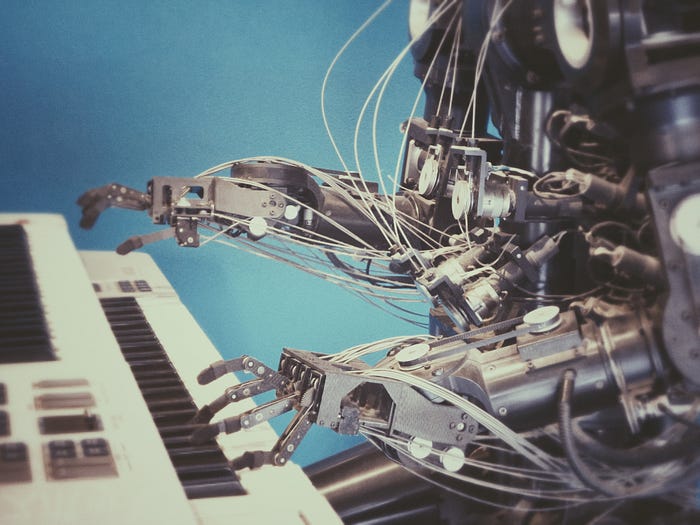Robotic AI Learns to be Spontaneous

We know that AI robots operate based on information they learn from humans. But what happens when they start acting spontaneously, without needing any stimulus or prompting from humans?
That’s what Tokyo-based researchers are hoping to find out. A group of researchers from the University of Tokyo has developed a machine learning-based system that will allow AI robots to behave spontaneously. (You can read more about their findings in their article “Designing Spontaneous Behavior Switching Via Chaotic Itinerancy,” published in Science Advances.)
How Robotic AI Can Act Spontaneously
A robotic AI learning how to act spontaneously is headline newsworthy because there’s a lot that goes into teaching a robotic AI to be spontaneous. The idea itself seems like a sort of oxymoron.
To achieve spontaneity in robots, the researchers from the University of Tokyo utilized a specific class of systems, high-dimensional chaos, which is capable of modeling animal brains in their study. This complex system is sensitive to initial conditions, making it a challenge for researchers to control.
Researchers focused on a specific aspect of high-dimensional chaos, chaotic itinerancy (CI), to implement spontaneous behavioral patterns in robots. CI is helpful in understanding brain activity during periods of memory recall and association. By harnessing this aspect of behavior, scientists hope that AI robots will be able to rely on their own memories to make decisions and act spontaneously.
In their article, researchers further elaborate that incorporating CI into robots could allow them (and other technologists) to design robots that act spontaneously, without needing predefined structures that might otherwise hinder a robot’s ability to function.
Why Would We Want Robots to Be Spontaneous?
This is the most obvious question we need to ask when considering the research. The thought of AI-powered robots that can think and act spontaneously is a little chilling for many people, who immediately think of movies like The Terminator in which an autonomous robot causes mass chaos and destruction.
In the real world, though, autonomous robots have the potential to be more helpful than destructive.
For example, a robot working in a business or organization may be better able to make decisions based on its memory. It might find new ways to solve a common problem, or it could uncover a solution for a challenge that has been unsolved for years. These types of breakthroughs could be monumental for businesses that can move forward and progress their industry faster thanks to the help from a spontaneously thinking AI robot.
Concerns about Spontaneous Robots
Of course, there are points of concern that need to be addressed before our society can readily adopt spontaneous robots as part of our culture. If robots can act and think independently, what will prevent them from taking over human organizations and governments?
Regardless of your thoughts on whether or not robots should be able to think and act autonomously, this research is an important advancement in the world of AI. We do not need to be worried about a hostile robot takeover as of yet. Still, we need to think carefully about all the implications and consequences that may result from the emergence of robots that can act spontaneously.